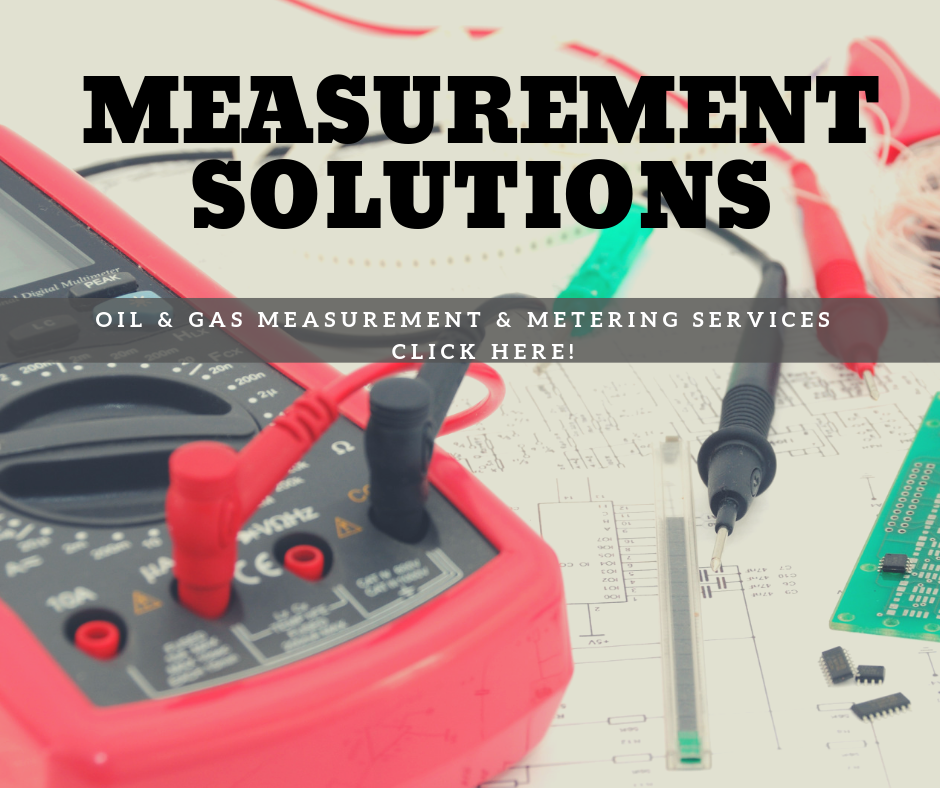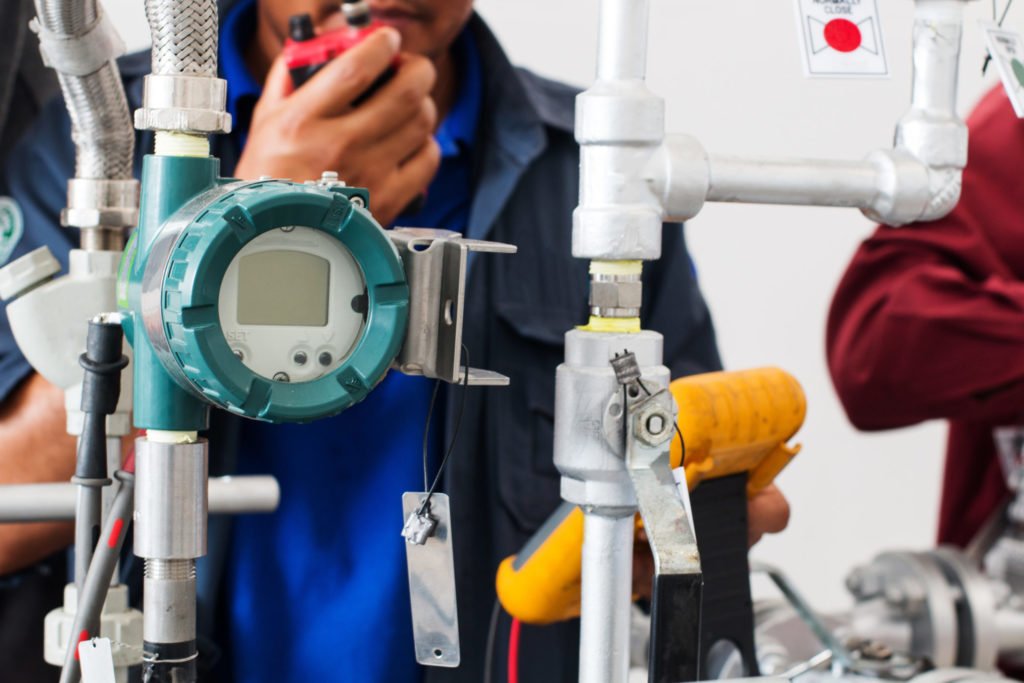Why is Measurement in Oil & Gas Important?
Pressure and temperature transmitters are vital to the pipeline. By estimating temperature, pipeline pressure, and the pressure drop over a restraint in the pipeline, you can understand the flow of oil or gas through the pipe at any time. The exchange of oil to another party or facility, which is known as custody transfer, must be measured precisely with flowmeters. Since flow measurement is what establishes the cost of oil and gas products, it is crucial that these measurements are 100% accurate. To prevent incorrect measurement, technicians need to routinely calibrate the pressure and temperature transmitters. This calibration ensures that the results being used to determine the flow are correct.
How are Oil & Gas Measured?
Produced crude oil and natural gas (hydrocarbons) are measured before leaving the well site, as required by law. The industry standard is that the Operator confirms the measurements through a check meter for gas, or by re-checking the levels in oil storage tanks for oil.
Crude Oil Measurement
“Crude” means that the oil comes from the earth in its raw form and likely contains water and other impurities. The first step toward accurate crude oil measurement is to remove the free water and sediment. Afterward, oil is purer and can be measured accurately. Crude oil is measured in one of two ways, depending on the total volume available for measurement.
For smaller volumes between 1-100 BOPD, the oil typically flows into a storage tank and is held there until enough oil is accumulated to remove the oil from the field location and take it offsite for more extensive treatment. Once the oil is offsite, a sample is taken and placed in a centrifuge which causes the impurities to separate from the oil. To measure the volume while on the field, a weighted measuring strap is lowered into the oil tank, and an initial reading is taken. Then, a valve is opened which allows the oil to flow into a pipeline or truck. When the tank is almost empty, the valve is shut and a second strap reading is taken. The difference between the two readings is then used to calculate the correct volume of oil that has been removed.
For larger volumes between 100-1000 BOPD, the oil flows through an automated system called a LACT unit (Lease Automatic Custody Transfer.) This system delivers for the automatic measurement, sampling, and transfer of oil from the field location into a pipeline.

Natural Gas Measurement
Most wells measure gas with an orifice meter. When gas is passed through an Orifice Meter, there is a drop in the pressure between the Inlet section and Outlet Section of Orifice Meter. This drop in pressure can be measured using a differential pressure measuring instrument. Orifice meters do not have any moving parts and are easily serviced in the field. The calculation of total gas flow is done monthly, usually by a gas measurement contractor.
Why is Oil & Gas Measurement Important?
Pressure and temperature transmitters are vital to the pipeline. By estimating temperature, pipeline pressure, and the pressure drop over a restraint in the pipeline, you can understand the flow of oil or gas through the pipe at any time. The exchange of oil to another party or facility, which is known as custody transfer, must be measured precisely with flowmeters. Since flow measurement is what establishes the cost of oil and gas products, it is crucial that these measurements are 100% accurate. To prevent incorrect measurement, technicians need to routinely calibrate the pressure and temperature transmitters. This calibration ensures that the results being used to determine the flow are correct.
What is Regulatory?
Regulatory in oil and gas helps protect Canadian ecosystems and society. Improvements to existing regulations will continue to ensure the responsible development of Canada’s oil and gas resources. It takes a lot of infrastructure to produce, process, and move all the oil and gas resources to markets. These laws help regulate the infrastructure, which includes pipelines, wells, processing plants, and other facilities.

Oil and Gas Measurement Regulations
Precise gas measurement and regulatory reporting helps to uphold compliance with all provincial requirements and regulations, maintains fairness in the marketplace, and produce higher quality products and services. Each province has its system of weight and measurement, various laws have been passed to demonstrate fairness in society to preserve the country’s economic success.
Examples of these requirements are as followed:
- “Where the measurement of oil is required under these Regulations or under the Canada Oil and Gas Land Regulations, its volume shall be computed as the number of barrels it would occupy at a standard temperature of 60°/60°F.
- (2) Where the temperature conditions differ from 60°F, the volume shall be converted to that which would be occupied at 60°F in accordance with Table 7 of Petroleum Measurement Tables published jointly by the American Society of Testing Materials and the Institute of Petroleum and designated respectively as D1250 and 200.
- 104 (1) Where the measurement of gas is required under these Regulations, its volume shall be computed as the number of cubic feet it would occupy at standard conditions of 14.65 pounds per square inch absolute and 60°F.
- (2) Where the conditions of pressure and temperature differ from the standard conditions set out in subsection (1), the volume shall be converted to the standard conditions in accordance with the Ideal Gas Laws and corrected for deviations from the Ideal Gas Laws where the amount of the deviation exceeds one percent.”
Reference: Government of Canada Justice Laws
AER (Alberta Energy Regulator)
The AER’s purpose is to provide safe, efficient, orderly, and environmentally responsible development of energy resources in Alberta. Every province has very similar energy regulations for the oil and gas industry. Alberta’s energy sector is incredibly complex and includes crude oil, natural gas, oil sands, and coal resources, and a pipeline network that moves these resources to markets. As Alberta’s sole regulator of the energy industry, the AER keeps energy companies within regulation as they develop resources across the province. Oil and gas companies must produce Alberta’s energy resources in a safe and environmentally responsible fashion and without any waste.
Oil and gas measurement and regulatory is a fundamental factor in complying with regulations, ensuring your equipment and instruments are functioning properly, and that you are producing high-quality oil and gas products. Measurement is vital to the energy sector, the larger the transaction the larger the risk of financial losses over the transferred energy.
Read More: Why Measurement Matters

